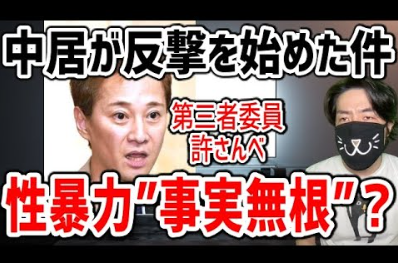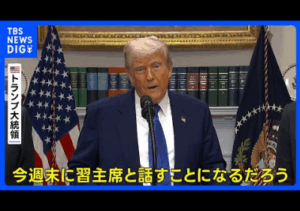【Shigeo’s Review】
This is a review regarding “Masahiro Nakai’s rebuttal against the third-party committee: Was there consent? The definition of sexual violence and future points of contention.”
The video details Masahiro Nakai’s response to the third-party committee’s recognition of sexual violence. It highlights the complexity and sensitivity of the issue, illustrating that it cannot simply be framed as a matter of whether or not a violent act occurred.
Nakai’s primary argument is that “the image of sexual violence defined by the third-party committee differs from the reality of the troubles he was involved in.” In Japanese society, the term “sexual violence” typically evokes images of physical violence or coercive sexual acts. However, Nakai denies any occurrence of such violent acts.
While he acknowledges the existence of troubles, he consistently refutes any claims of violent behavior, stating that while he has apologized, the “violence” reported does not apply to his case. Conversely, the third-party committee’s investigation report classified the situation as a “victimization by sexual violence” based on multiple pieces of evidence, including testimonies from victim A, interviews with related individuals, and text message exchanges.
It’s crucial to note that the definition of “sexual violence” is based on WHO standards, encompassing a wide concept that includes “any sexual act without consent,” not limited to merely violent actions. Thus, situations involving sexual actions or coercions that exploit someone’s difficult position, even in the absence of physical violence, can still be classified as sexual violence.
This underscores a significant disconnect between Nakai’s perspective and that of the third-party committee; Nakai asserts that “there was consent” and claims he even proposed the release from obligations (the cancellation of cooperation with the investigation). On the other hand, the third-party committee claims that victim A was willing to be released from obligations, but that Nakai’s refusal prevented it from happening, revealing contradictions in both sides’ testimonies.
Furthermore, the question of whether there was “consent” is critical. As pointed out in the video, legally, if there was no refusal at the time of the act, it is often regarded as having consent. However, subsequent misunderstandings and discrepancies in perceptions regarding their relationship can become points of contention.
Additionally, if there was any pretense of a relationship to obtain consent, it may be judged as deceptive behavior, making this aspect particularly challenging to assess.
In this case, specific details of the actions and email exchanges have been withheld, leading both parties to seek evidence disclosure regarding materials not made public. Nakai’s demand for clarification on “which email was used as the basis for the determination” suggests that the details of the materials are a central issue.
Notably, Toru Hashimoto has stated on television programs and social media that he “understands Nakai’s position” and mentioned that “if this is the truth, many would feel it is sexual violence.” Hashimoto’s statements imply that there may be some persuasive strength behind the specific contents underpinning the committee’s judgment.
This issue involves much more than simply determining “whether violence occurred”; it encompasses layers of elements such as “the presence or absence of sexual consent,” “discrepancies in understanding,” “interpretation of evidence,” and “transparency of the investigative process.” It also raises broader governance issues within the entertainment and television industry centered around Fuji TV, exposing problems rooted in industry structures such as deference to prominent entertainers, concealment of troubles, and employee responses.
While Nakai’s rebuttal can be understood as a personal defense, the third-party committee appears confident in their investigation results. This leads to the impression that both sides are reaching an impasse in their claims.
Ultimately, further investigations or legal proceedings may clarify the truth, but at present, careful examination of both sides’ arguments and submitted evidence is necessary.
This issue will likely continue to attract attention, with hopes that it will deepen societal discussions around the definitions of sexual consent and violence. It is crucial to analyze the information from the media reports, testimonies of the parties involved, and the third-party investigation report with a calm and multifaceted perspective.
In summary, this issue possesses a complexity that cannot be simplified while encompassing socially significant themes. The video provides a thorough clarification of the background and points of contention, which is commendable, as it serves as a useful resource for viewers to think calmly and from multiple angles.





